
Hair loss affects millions of people worldwide, impacting not only their appearance but also their self-confidence and quality of life. While various treatments exist for hair restoration, advancements in regenerative medicine and medical technology have led to the development of innovative solutions that offer efficient and effective results. Platelet-rich plasma (PRP), exosomes, and stem cells are emerging as promising solutions, offering natural and effective approaches to stimulate hair growth and reverse hair loss.
Another innovation is the multi-needle automated injector, a device that is revolutionizing the field of hair restoration by streamlining the treatment process and optimizing treatment outcomes.

In this article, we explore the role of regenerative treatments and multi-needle automated injectors in hair restoration and how they are transforming the patient experience.
A multi-needle automated injector, such as the MeDinjecT device, is a state-of-the-art multi-needle automated injector specifically designed for medical procedures such as hair restoration treatments.
This innovative device is engineered to streamline the injection process, providing precise and efficient delivery of therapeutic agents, such as platelet-rich plasma, exosomes and/or stem cells, to the targeted treatment area.
Here are some key features and components of a multi-needle automated injector like the MedInjecT:
Enhanced Precision and Accuracy: Multi-needle automated injectors are designed to deliver precise and accurate injections of therapeutic agents directly into the scalp, targeting the hair follicles and surrounding tissues with high precision. Unlike manual injections, which can vary in depth and consistency, automated injectors ensure uniform distribution of the treatment solution across the treatment area, maximizing its effectiveness and minimizing waste. This enhanced precision allows healthcare providers to deliver optimal doses of therapeutic agents to the targeted areas, leading to superior treatment outcomes.
Streamlined Treatment Process: One of the key advantages of multi-needle automated injectors is their ability to streamline the treatment process, significantly reducing the time required to perform hair restoration procedures. These devices are equipped with multiple needles that can deliver rapid and controlled injections simultaneously, allowing providers to cover larger areas of the scalp in a shorter amount of time. This not only improves the efficiency of the treatment but also enhances the overall patient experience by minimizing discomfort and reducing the time spent in the clinic.
Minimized Discomfort: The rapid and controlled injection process of multi-needle automated injectors minimizes discomfort for patients compared to manual injections, which can be slower and more painful. Additionally, some automated injectors incorporate vibration or cooling mechanisms to further reduce discomfort during the procedure. By minimizing discomfort, automated injectors help improve patient satisfaction and compliance with treatment, leading to better treatment outcomes in the long run.
Customizable Treatment Parameters: Multi-needle automated injectors allow healthcare providers to customize treatment parameters such as injection depth, speed, and spacing based on the patient’s unique needs and treatment goals. This flexibility ensures that the treatment is tailored to each patient’s specific condition and preferences, maximizing the effectiveness of the treatment and optimizing treatment outcomes.
Versatility in Treatment Options: Multi-needle automated injectors can be used to administer a wide range of treatments for hair restoration, including platelet-rich plasma (PRP) therapy, mesotherapy, and stem cell injections. This versatility allows healthcare providers to offer comprehensive and customized treatment plans to address various types of hair loss and patient needs. Whether used as a standalone treatment or as part of a combination therapy approach, automated injectors play a crucial role in achieving optimal results in hair restoration.
Customizable Treatment Parameters: Multi-needle automated injectors allow healthcare providers to customize treatment parameters such as injection depth, speed, and spacing based on the patient’s unique needs and treatment goals. This flexibility ensures that the treatment is tailored to each patient’s specific condition and preferences, maximizing the effectiveness of the treatment and optimizing treatment outcomes.
Versatility in Treatment Options: Multi-needle automated injectors can be used to administer a wide range of treatments for hair restoration, including platelet-rich plasma (PRP) therapy, mesotherapy, and stem cell injections. This versatility allows healthcare providers to offer comprehensive and customized treatment plans to address various types of hair loss and patient needs. Whether used as a standalone treatment or as part of a combination therapy approach, automated injectors play a crucial role in achieving optimal results in hair restoration.
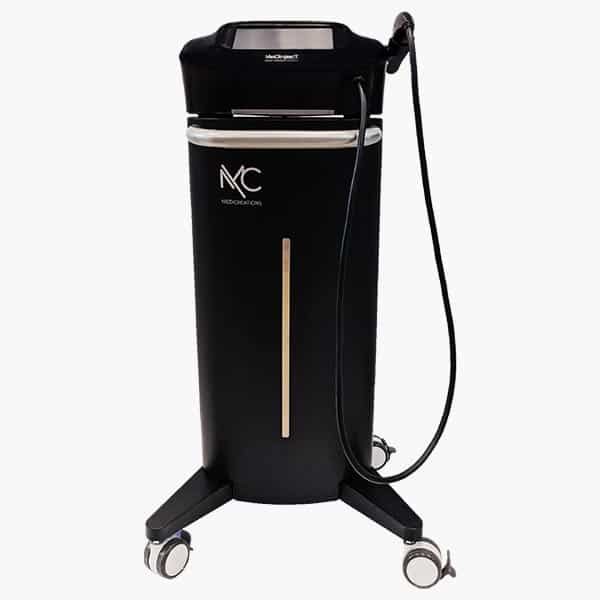
The MeDinjecT is an automated digital syringe injector. It’s designed to balance injectable substances with equal distribution into the skin, using a 9 needle, adjustable-depth, disposable tip.
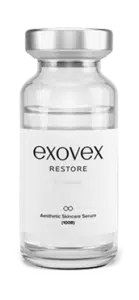
The natural nanoparticles are a rich mixture of precision growth factors, peptides, cytokines, and mRNA that target hair cellular structures to facilitate the repair of cells.
Platelet-rich plasma (PRP), exosomes, and stem cels are revolutionizing the field of hair restoration by offering safe, effective, and natural solutions for hair loss.
These regenerative treatments harness the body’s innate healing abilities to rejuvenate hair follicles, stimulate hair growth, and improve hair density and thickness.
Platelet-rich plasma (PRP) is a regenerative treatment that utilizes the healing properties of platelets found in the blood.
During a PRP procedure, a small amount of blood is drawn from the patient and processed to isolate the platelet-rich plasma. This concentrated plasma, rich in growth factors and cytokines, is then injected into the scalp at the site of hair loss.
Platelet-rich plasma (PRP) offers several benefits for hair restoration, making it a popular choice for individuals seeking natural and effective solutions for hair loss. Some of the key benefits of PRP for hair restoration include:
Overall, PRP offers a safe, effective, and natural approach to hair restoration, helping patients achieve thicker, fuller, and healthier-looking hair with minimal discomfort or downtime. To explore PRP therapy further and determine if it’s the right option for you, consult with a qualified healthcare provider or dermatologist experienced in hair restoration treatments.
Exosomes contain a payload of growth factors, microRNAs, and other signaling molecules that modulate cellular processes and promote tissue regeneration. When applied to the scalp, exosome therapy can rejuvenate hair follicles, stimulate hair growth, and improve hair density and thickness.
Exosome therapy is an innovative approach for addressing hair loss, offering several benefits for individuals seeking effective and natural solutions. Some of the key benefits of exosomes for hair loss include:
Overall, hair restoration with exosomes offers a promising and effective solution for individuals experiencing hair loss, providing natural and long-lasting results with minimal discomfort or downtime.
Stem cell therapy for hair restoration involves the use of stem cells derived from various sources, such as adipose tissue (fat), bone marrow, or umbilical cord blood. Stem cells have the remarkable ability to differentiate into different cell types and promote tissue regeneration and repair.
When injected into the scalp, stem cells can rejuvenate damaged hair follicles, stimulate new hair growth, and improve hair quality and texture.
Additionally, stem cells may exert anti-inflammatory and immunomodulatory effects, creating a favorable environment for hair regrowth.
Stem cell therapy for hair loss offers several benefits, harnessing the regenerative potential of stem cells to rejuvenate hair follicles and promote hair growth. Some of the key benefits of stem cells for hair loss include:
Overall, stem cell therapy offers a promising and effective solution for individuals experiencing hair loss, providing natural and long-lasting results with minimal discomfort or downtime.
Before and After Results Using an Automated Injector for Hair Restoration
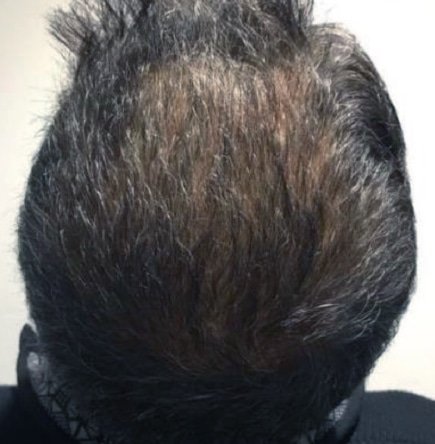
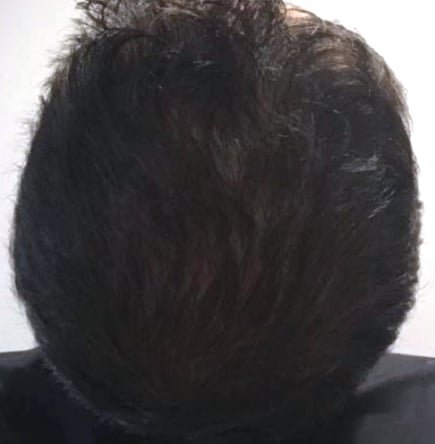
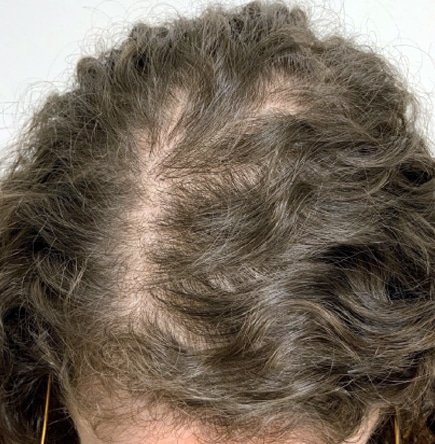
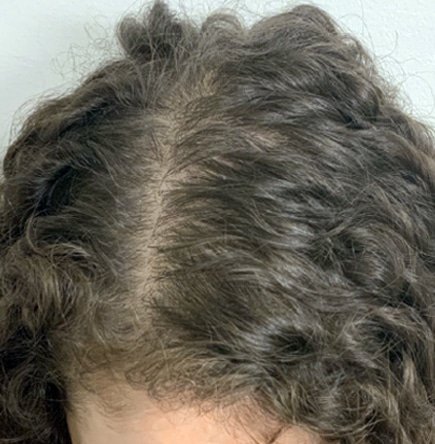
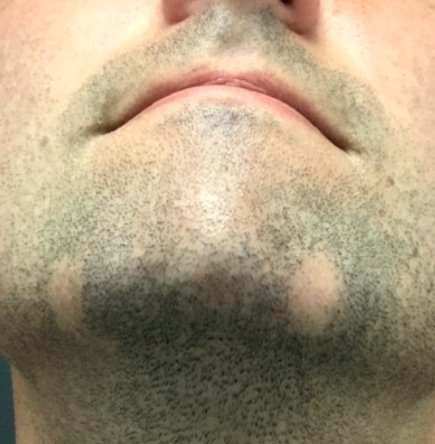
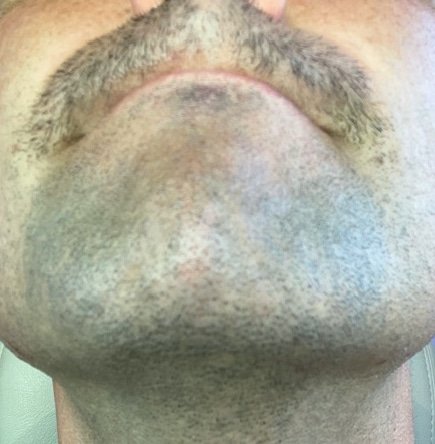
Multi-needle automated injectors are revolutionizing the field of hair restoration by offering enhanced precision, streamlined treatment processes, minimized discomfort, and customizable treatment options.
By optimizing the delivery of regenerative agents to the scalp, these innovative devices are transforming the patient experience and improving treatment outcomes for individuals experiencing hair loss.
With ongoing research and advancements in regenerative medicine, PRP, exosome therapy, and stem cells combined with multi-needle automated injectors are poised to play an increasingly important role in the future of hair restoration, offering new possibilities for achieving natural and long-lasting results.
Non-surgical hair restoration methods offer several benefits over surgical options, making them an appealing choice for many individuals experiencing hair loss.
Firstly, non-surgical treatments are generally less invasive, involving procedures such as topical medications, injections, and low-level laser therapy, which typically have minimal downtime and discomfort compared to surgical interventions like hair transplant surgery.
Additionally, non-surgical treatments often come with lower risks of complications, such as infection or scarring, and may be more suitable for individuals with medical conditions or concerns that preclude them from undergoing surgery.
Non-surgical options also tend to be more affordable and accessible, making them a viable choice for individuals seeking effective hair restoration solutions without the commitment or expense of surgery.
Hair restoration and hair transplantation are two approaches to addressing hair loss, each with its own unique characteristics and benefits.
Hair restoration encompasses a wide range of non-surgical treatments aimed at improving the overall health and appearance of the hair, including topical medications, injections, laser therapy, and scalp treatments. These non-invasive methods focus on stimulating hair growth, strengthening existing hair follicles, and improving scalp health to promote fuller, thicker hair.
On the other hand, hair transplantation is a surgical procedure that involves the transplantation of hair follicles from donor areas of the scalp to areas affected by hair loss. This procedure is typically recommended for individuals with more advanced or permanent hair loss.
Since we have been using the ZWave for massage after CoolSculpting®, we have seen a dramatic improvement in nerve discomfort after the procedure. If patients do have discomfort, we have found that a few additional ZWave treatments help to diminish that discomfort more rapidly. The fat reduction after CoolSculpting® with ZWave is noticeable more quickly, as early as 4 weeks after treatment, and may be more pronounced in some patients. We also like the consistency of the massage no matter which clinician is performing the
Larry Vigilia, MD Colorado Family Health Center
For the past two years, Zimmer’s ZWave device has found a home in my practice because of its effective and safety profile as a standalone technology for cellulite treatments and for reduction of edema, subdermal irregularities and improved vascularization after nonsurgical, minimal invasive and surgical procedures for face/neck and body contouring. Of the many devices in my aesthetic center, I would strongly recommend ZWave as a complement to enhance the results of an integrated aesthetic practice. Other perceived benefits are that the device cost is affordable, patient acceptance is high, and staff are comfortable in the providing treatments. My clinical research with this device supports our observed outcomes.
Scott Solyman MD General Surgeon